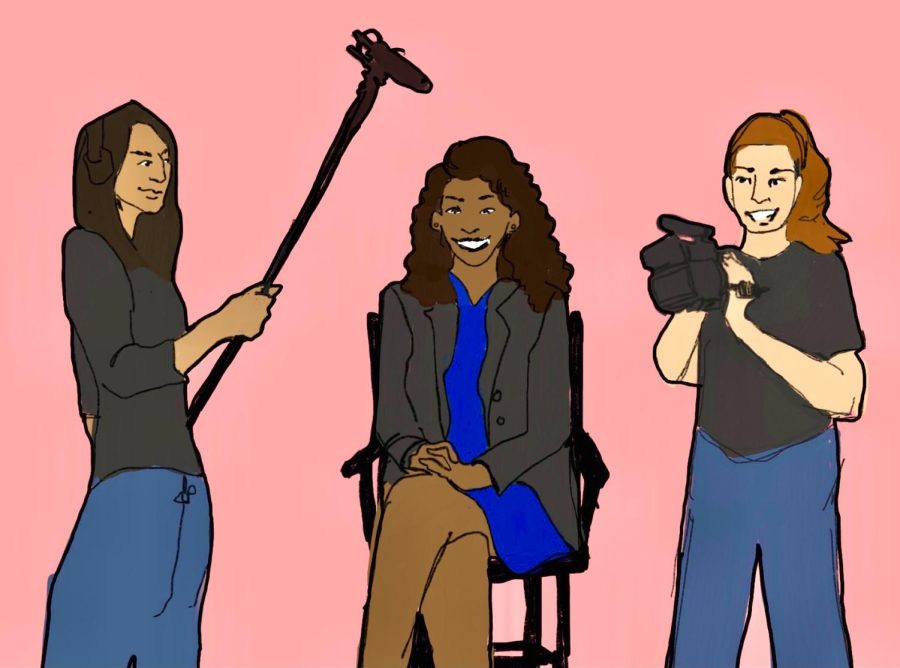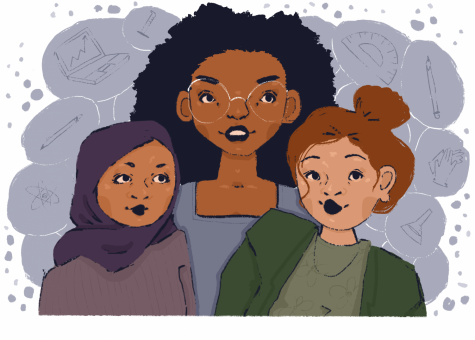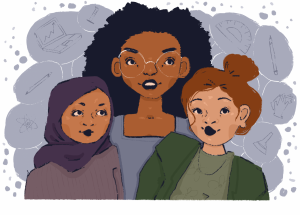Latinas in radio-television-film use media to dismantle stereotypes
Sorelle Jackson/The Daily Texan
3/7/22-women animation-Sorelle Jackson
March 7, 2022
Content Warning: violence, domestic abuse, murder
The mellow tune of The Misfits filtered into the room, the lead’s voice harmonizing with violent lyrics, revealing the story of a man killing his girlfriend but missing her presence afterward. Vanessa Cota ran her pencil across the page, allowing her ideas to bleed onto the paper. Her strokes personified the grief and guilt of the killer.
Cota said the purpose of her project — an animated film of the song “Saturday Night” by The Misfits — is to embody the pain and regret of men after their unrestrained outbursts hurt others.
“When (men express themselves), it comes out as a complete burst, and they don’t realize what they’ve done,” said Cota, radio-television-film senior. “It’s the underlying message of the story.”
With her project, the senior intends to display the damage of toxic masculinity, and how it prevents men from expressing themselves. The film will premiere May 6 at the radio-television-film program’s end-of-semester screenings. Despite the content’s difficulty, Cota and other Latina radio-television-film students use their respective mediums to tackle gender stereotypes and define their place in the cinematic world.
Hindered by the many stereotypes against women, often portrayed as submissive side characters on screen, Cota said she aims to transcend stereotypes by projecting multifaceted women on screen.
“Women are often portrayed as sexual objects,” Cota said. “It’s this male fantasy, and I would want to see that change in the coming years.”
While Cota works to tear down long-standing prejudices, radio-television-film sophomore Sofia Leal said there are extensive barriers Latinas must overcome, especially when it comes to succeeding in the film industry.
“The path is different,” Leal said. “Other film majors don’t have to do all this extra work to be taken seriously.”
When Leal watched television with primarily white casts as a kid, she said she sketched out characters to fit into the narrative, daydreaming of someone like her on screen.
“I wanted that taste of representation,” Leal said. “I use film as a method of escapism, but it’s hard to do so when your identity isn’t part of the narrative.”
As a child of immigrants from different countries, Leal said she carried two worlds with her at all times — a beautiful mix of Mexico and Venezuela.
“It was hard to find good representation for someone like me,” Leal said. “Mexican representation in mainstream America was hard to come by, and Venezuelan representation was nonexistent.”
Stapling pages together, Brandy Frausto smiled at her creation, a script for her newest film. Sparked by a childhood of storytelling, the radio-television-film sophomore’s passion inspired her to continue telling stories in college.
Frausto said she experiences animosity in the classroom, noting the misogynistic tendencies of some of her male classmates.
“It’s little things they say,” Frausto said. “I feel a lot of the boys in film have the mindset that they know better than women. It’s frustrating.”
Though there are nearly equal numbers of women and men enrolled in UT’s radio-television-film program, names in the director’s chair are mostly men. As male directors greatly outnumber female directors, Frausto said statistics are discouraging.
According to the Center for the Studies of Women in Television and Film, of the 250 top grossing films in 2021, only 17% had female directors. However, Frausto said she will not be deterred, dedicating herself to bringing her experience and culture to the big screen.
“My experiences growing up were influenced by the fact that I am Mexican-American, (which) not many can relate to,” Frausto said. “If nobody else is going to tell (these stories), why can’t I?”







